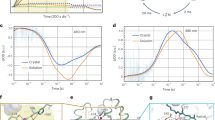Abstract.
The history of research on voltage-gated proton channels is recounted, from their proposed existence in dinoflagellates by Hastings in 1972 and their demonstration in snail neurons by Thomas and Meech in 1982 to the discovery in 2006 (after a decade of controversy) of genes that unequivocally code for proton channels. Voltage-gated proton channels are perfectly selective for protons, conduct deuterons half as well, and the conductance is strongly temperature dependent. These properties are consistent with a conduction mechanism involving hydrogen-bonded-chain transfer, in which the selectivity filter is a titratable amino acid residue. Channel opening is regulated stringently by pH such that only outward current is normally activated. Main functions of proton channels include acid extrusion from cells and charge compensation for the electrogenic activity of the phagocyte NADPH oxidase. Genetic approaches hold the promise of rapid progress in the near future.
Similar content being viewed by others
Author information
Authors and Affiliations
Corresponding author
Additional information
Received 31 January 2008; received after revision 4 March 2008; accepted 2 April 2008
Rights and permissions
About this article
Cite this article
DeCoursey, T.E. Voltage-gated proton channels. Cell. Mol. Life Sci. 65, 2554–2573 (2008). https://doi.org/10.1007/s00018-008-8056-8
Published:
Issue Date:
DOI: https://doi.org/10.1007/s00018-008-8056-8




